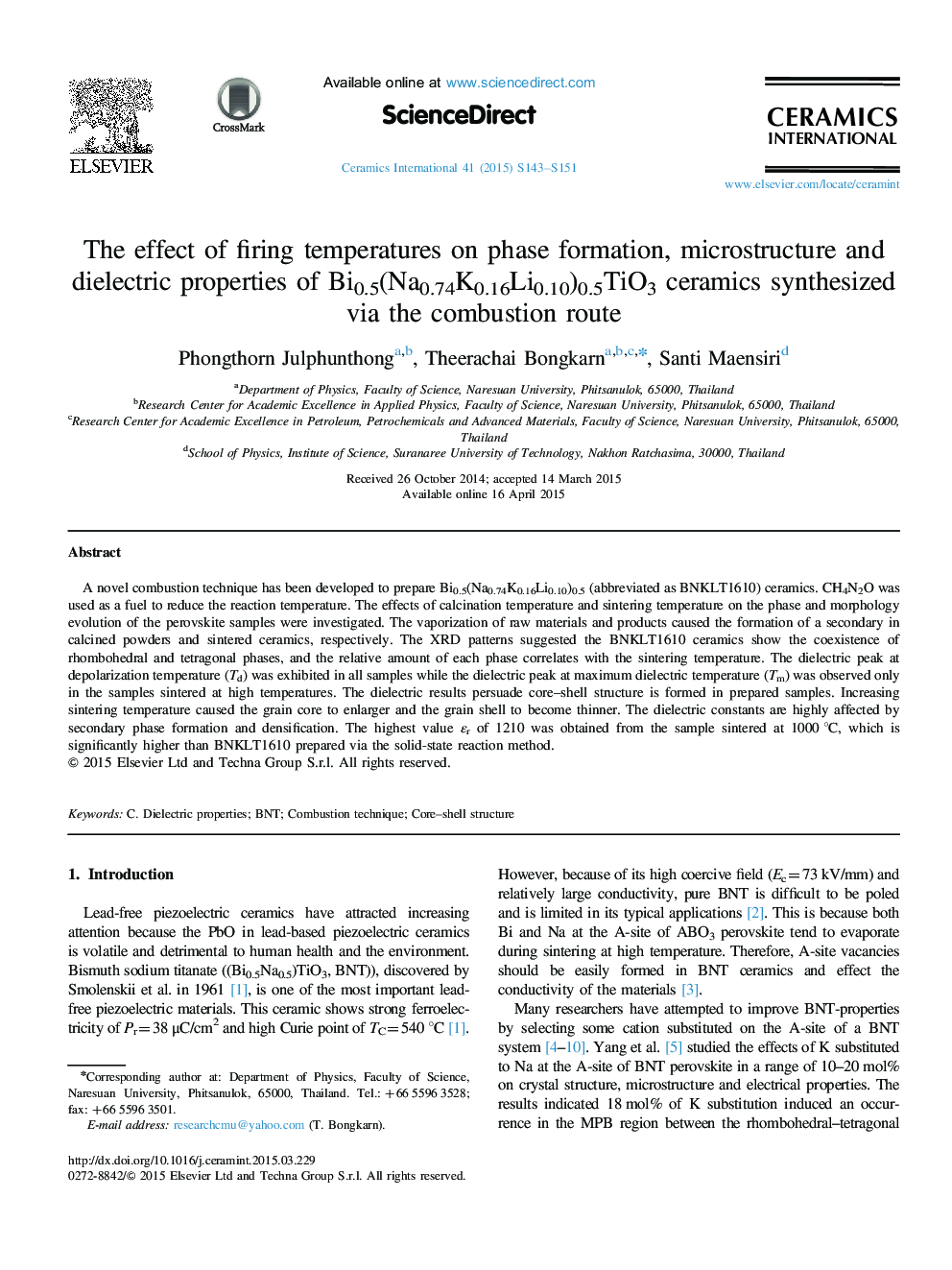| Article ID | Journal | Published Year | Pages | File Type |
|---|---|---|---|---|
| 1460906 | Ceramics International | 2015 | 9 Pages |
A novel combustion technique has been developed to prepare Bi0.5(Na0.74K0.16Li0.10)0.5 (abbreviated as BNKLT1610) ceramics. CH4N2O was used as a fuel to reduce the reaction temperature. The effects of calcination temperature and sintering temperature on the phase and morphology evolution of the perovskite samples were investigated. The vaporization of raw materials and products caused the formation of a secondary in calcined powders and sintered ceramics, respectively. The XRD patterns suggested the BNKLT1610 ceramics show the coexistence of rhombohedral and tetragonal phases, and the relative amount of each phase correlates with the sintering temperature. The dielectric peak at depolarization temperature (Td) was exhibited in all samples while the dielectric peak at maximum dielectric temperature (Tm) was observed only in the samples sintered at high temperatures. The dielectric results persuade core–shell structure is formed in prepared samples. Increasing sintering temperature caused the grain core to enlarger and the grain shell to become thinner. The dielectric constants are highly affected by secondary phase formation and densification. The highest value εr of 1210 was obtained from the sample sintered at 1000 °C, which is significantly higher than BNKLT1610 prepared via the solid-state reaction method.
